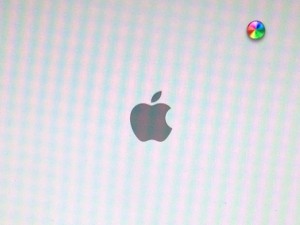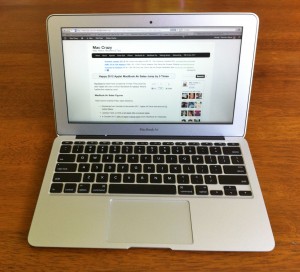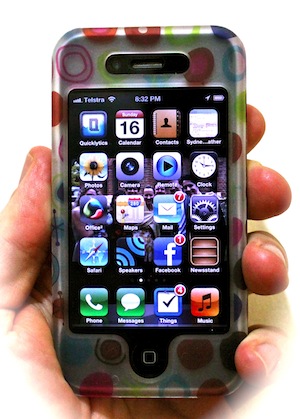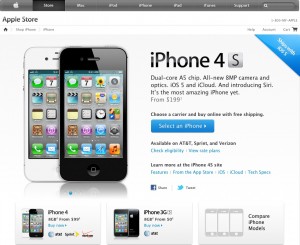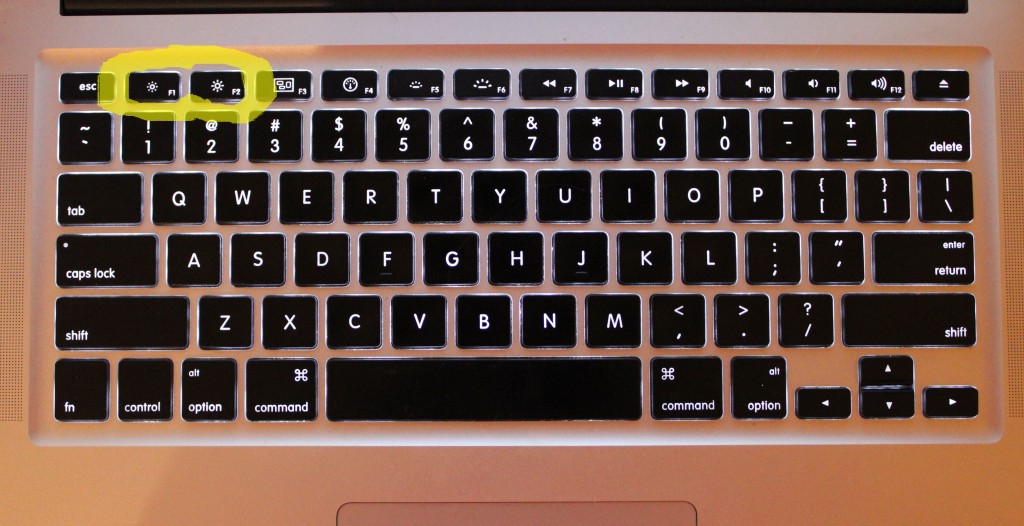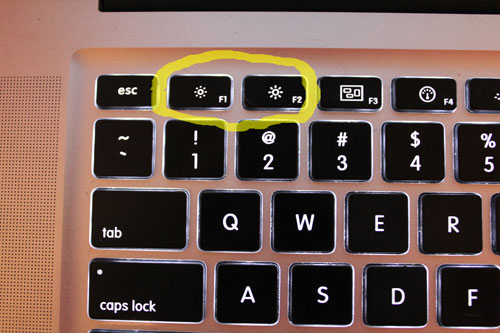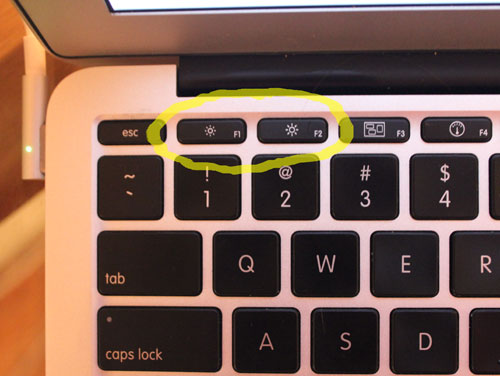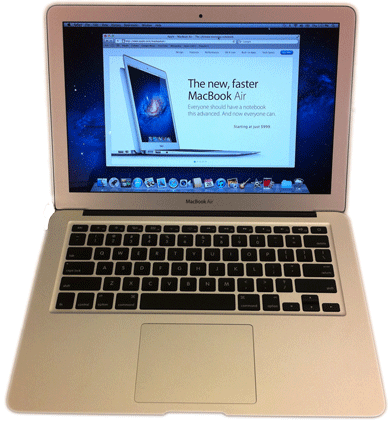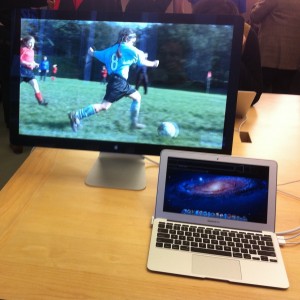Do you want to make great recordings? Do you want to get a studio-quality sound? These eight keys cover the essentials to make great recordings.
This article is written with the Mac in mind, but I started out recording music on Windows, so I know these essentials work for making music on Windows 7 as well.
We use Sarah’s current recording setup as an example. Sarah, a Mac Crazy reader, uses Garageband and her MacBook Pro’s built-in mic to record herself singing and playing guitar. Sarah wants to improve the sound quality of her music recordings, and she’s on a budget. Here’s Sarah’s original question:
Heyyyy  i have the 13 inch macbook pro, i play acoustic and electric guitar and sing aswell, when i go to record i simply use the macbook pro microphone and either play guitar and sing together or record each seperately. i use a Goodmans ACC2011 microphone which is pretty old and uses a jack lead ( i think thats the name ) which you cant detach from the microphone and im guessing its just a karaoke one.. i use it with a ALBA karaoke machine haha and i plug my guitar into a big good amp ive got using a jack lead? (peavey). im wanting to make my sound quality a lot better but dont know where to start, i also use garageband to put it all together. i was thinking a new microphone, a pop screen thing and a interface? but im not sure which to get and what will be compatible with what ive already got. im only 16 and the music is only for home use which will be uploaded to soundcloud or something so its nothing major.. yet
i have the 13 inch macbook pro, i play acoustic and electric guitar and sing aswell, when i go to record i simply use the macbook pro microphone and either play guitar and sing together or record each seperately. i use a Goodmans ACC2011 microphone which is pretty old and uses a jack lead ( i think thats the name ) which you cant detach from the microphone and im guessing its just a karaoke one.. i use it with a ALBA karaoke machine haha and i plug my guitar into a big good amp ive got using a jack lead? (peavey). im wanting to make my sound quality a lot better but dont know where to start, i also use garageband to put it all together. i was thinking a new microphone, a pop screen thing and a interface? but im not sure which to get and what will be compatible with what ive already got. im only 16 and the music is only for home use which will be uploaded to soundcloud or something so its nothing major.. yet  and as im only young i really seriously need it to be affordable as i have hardly any money haha! if you helped i would seriously appreciate it as ive been searching the web for ages trying to find help
and as im only young i really seriously need it to be affordable as i have hardly any money haha! if you helped i would seriously appreciate it as ive been searching the web for ages trying to find help  thanks
thanks
oh sorry i also use a yamaha PSR-262 sometimes to record keyboard and singing or just a keyboard part.. so any leads needed for that would be helpful 🙂 thanks
Source: Comments from “What’s the Best MacBook for Making Music?”
Recording Equipment, Setup and Environment Affect the Sound
When you record, a number of factors affect the quality of the recording and “color” the sound:
- Which recording equipment are you using (e.g. do you use a studio microphone to record your vocals or the mic in your laptop)
- How have you setup that recording equipment (e.g. when mic’ing guitar amp, do you put it more to the center of the speaker cone, or more to the side)
- What environment are you recording in (e.g. are you in a room with tiled floors and a tall roof, giving a natural, spacious echo to any sounds, or are you in a small bedroom, with carpet and duvet damping any echo)
Let’s take Sarah’s current recording setup as an example of how these factors affect sound. Sarah’s using a Goodmans ACC2011 microphone for vocals. From what I can gather, it’s a cheap dynamic mic ($3.21 for a used one on eBay) with a quarter inch TRS (tip-ring-sleeve) plug. Sarah is using the Goodmans mic with an ALBA Karaoke machine. Together these two lo-fi items will most likely conspire in a sonic assassination of any singer. There’s always the possibility of a fluke where the combo suits Sarah’s voice, and perhaps brings out her unique sound. For example, to record Michael Jackson on Thriller, a relatively inexpensive Shure SM7B Dynamic Microphone was used instead of a high-end expensive studio mic, because for Michael’s voice it sounded better.
Sarah is running her electric guitar to the Peavey amp and then recording this through a mic (albeit a laptop mic). While it’s possible to plug the guitar directly into an audio interface, going through the guitar amp adds more character to the sound, such as overdrive. It’s a good choice. Put a mic in front of the amp, to the side of the speaker will give a warmer guitar tone. Putting a mic behind the speaker will give a muffled tone, giving a different sound. It is possible to record directly from the guitar and have the computer simulate the sound of different amps and effects pedals, for example with Guitar Rig.
There’s lots of options for recording the acoustic guitar. Does the acoustic guitar have a pickup in it? We could plug it straight into the audio interface, put a mic on it directly, run it through the guitar amp, or even the karaoke machine for something different. The different method will give different colored sounds. If the acoustic guitar is recorded unamplified with the MacBook Pro’s built-in mic a few feet away, the guitar may sound a bit flat.
The tiny condenser mic built-in to the Mac laptop, two to six feet away from your lips, instruments or amps, won’t really give a rich, full sound. The intensity of the sound is lost as it merges into the room, and more of the room’s character is added. As Sarah sings or plays guitar, the sounds will echo off the ceiling, walls and floor, and that echo – distinct or muddy, pleasing or not – will be coloring all her recordings.
The Yamaha PSR262 Keyboard has small built-in speakers giving a fairly tinny sound. The tinny sound recorded at a distance through the Mac Pro’s mic is unlikely to give an inspiring, emotionally evokative sound.
Improving Home Studio Sound
The good news is there’s massive room for improvement in a recording setup like this. We’re at an incredible time, where high quality recording equipment is cheap and easily available. You can achieve a near studio-quality sound on a budget. Here’s some keys to to improve your sound and great great recordings.
Key 1 – Try Close Micing
Close micing doesn’t mean putting mice close together! It means getting the mic closer to the sound. The closer you get to the source of the sound, the more of its essence you capture. The sound will have more presence. It penetrates more. It’s more intimate. You’ll hear more detail. They’ll be a greater range of sound, from soft to loud: At a distance a whisper is nothing, and a crashing sound can be shrugged off. Up close, a whisper is inside you, and crash rings your body like a bell.
If you’re recording from your laptop mic, you can move the laptop much closer to the sound source. (Be careful not to dent your MacBook Air or Pro while moving it around excitedly. The aluminium is easy to scratch & dent. Put it on something stable and not slippery. Ensure its elevated a bit to make it hard so noone steps on it. At least until they release indestructible carbon fibre Macs.)
As the mic goes closer, the color of the sound changes. For example, as the mic gets closer to a singer’s mouth, the bass in the singer’s voice tends to become more pronounced. This is called the proximity effect. You may bring the mic in close, and then take it back out slowly to give the mic a bit of “air”, until you get the sound you want.
You may need to drop the recording gain on your audio interface or in software so the recording doesn’t clip – where the level meters hit their maximum and turn red. Digital clipping gives an unpleasant transient mufflings of the sound – a lot of very short lived dull thuds.
If the recording still sounds distorted, but it’s not going red in the meters, the sound may be too powerful for the mic, i.e. above the maximum sound pressure level (SPL) it can mechanically register. If this happens, put more space between the mic and the sound source.
Key 2 – Monitor the Recording and Adjust
Plug in some earbuds or headphones you have lying around to listen to how you sound when you record. This is called monitoring. This is useful because you get immediate feedback on how you sound, and make adjustments on the fly. Choosing to monitor your recordings as you make them will make you a better recording engineer much faster. (Think how photographers are are now getting better perhaps five times faster because they don’t have to wait for their film to be developed. Don’t deprive yourself of the instant feedback monitoring gives you.)
For example, while you monitor your recording, you can play with the distance between the sound source and the mic until you hit the sweetspot and get the sound you want. You can hear the effect as you move close into the mic while you whisper a passage, and then move the mic out while you sing a loud note.
Music production software, such as Logic, Cubase and Garageband can loop what your recording back to the headphones, along with a click track, or the other tracks in your project tracks. Effects to your track, such as reverb or a vocoder, can be applied in real time, so you can hear how the final result will sound. There is a slight delay – the latency – between the sound travelling into the computer and the sound coming out. This latency is typically 0.01 of a second, but it can throw time sensitive people.
Most external audio interfaces offer hardware monitoring, where you hear whatever is plugged into the interface directly over the headphones, without any processing by the computer. It’s good to have a good set of “cans” (headphones) to monitor the recording. Open-back headphones leak a lot of sound, which could be picked up by mics during a record, so better to get close-back headphones. You can use earbuds to start with. Sound isolating ones earbuds would be better, again because they leak less sound out. There’s a range of studio headphones here from $18 to $300.
Key 3 – Mic Each Vocalist & Instrument
Recording everything together off a single mic is simple and can work, particularly if you’ve really got the guitar and vocals well practiced, you’re using a beautiful mic, and the mic is positioned perfectly to balance your voice and guitar. Sometimes a stereo pair of mics is used for this type of recording.
Still, have you noticed that it’s rare for a commercial album to be recorded with just one mic recording all vocalists & instruments at once? That’s because it’s far easier to get great sound by recording each vocalist & instrument in the music with a mic focused on just that vocalist or instrument. This makes it far easier to capture each sound source clearly.
Key 4 – Record Each Vocalist & Instrument to a Separate Track
By capturing each vocalist & instrument to a separate track, each part in the music can be modified individually – for example we could make a vocal track louder, or add a reverb effect to piano track. GarageBand provides multitrack recording for free.
To get a separate track for each voice and instrument with only one mic, record just one voice or instrument at a time. Singing or playing one part at a time really allows you to just focus on that part and put everything into it. Even musicians who are very accomplished and practiced with singing and playing their instrument(s) at the same time, such as Stevie Wonder, will often just focus on either singing or their instrument while laying down a track. If you have multiple mics, you can get a separate track per part by having a mic per vocalist and instrument, and recording all the parts at once. For example, to record a song with guitar and vocals, you’d need two mics and an audio interface with two mic inputs. If you played a stomp box as well to give a bass beat, you’d need a three channel audio interface to record them all at once.
Key 5 – Try Using Some Effects
You can add effects to fatten up your sound or give it depth. It’s normal to give vocals a bit of “reverb”, otherwise known as delay or echo. For electric guitar, you can play with adding a stereo delay.
Key 6 – Mix the Tracks
By having each instrument recorded in a separate track, you can adjust their volume levels so they sit together well. More advanced is to adjust their levels over time (like bringing the guitar up louder for a solo).
You can also “EQ” tracks so they sound better, and sit better together as a whole. Equalization (EQ), is where you cut or boost specific frequency bands for a track. It’s a more advanced version of adjusting a graphic equalizer on a stereo.
Key 7 – Use an External Audio Interface
The next key is to use an external audio interface. An external audio interface allows you to connect mics and instruments to your computer. Mics use a TRS jack (also called an unbalanced connection) or XLR connector (also caller a balanced connection). You can also directly connect instruments to an audio interface for recording, such as guitar and keyboard.
If you’re on a budget, I’d try the ART USB Dual Pre Two-Channel Preamplifier/Computer Interface ($99 list price, currently $49 at link). You could plug the Goodmans mic into this, and then you can close mic your voice, your acoustic guitar and your electric guitar amp, hopefully giving a richer, more dynamic sound. The unit above is cheap and got great reviews.
I like that the ART Dual Pre just uses normal USB sound standards, so it doesn’t need any special drivers. In the past, I have wasted a lot of time on Windows with drivers and firmware updates to get external audio interfaces working. Apparently this still happens, even sometimes for Mac. So, if you plug an audio interface into a Mac, and you can’t see it listed in the Sound panel of System Preferencesstraightaway, don’t waste too much time trying to get it to work. Swap it for something that works out of the box, and won’t give you trouble.
I also like that the ART Dual Pre has two active channels, so you could record two mono tracks at once, for example guitar and vocals. The M-Audio Fast Track, which costs twice as much or more on the street as the Art only handles a single channel at a time.
Another great feature of the ART Dual Pre is that it provides phantom power to mics, which is necessary for most studio-quality mics. The ART Dual Pre draws the power it needs from the Mac over USB. You can augment this power with a standard rectangular 9V battery, and for some mics you might get you a cleaner, crisper, livelier recording – more juice can help the mic respond faster and more accurately. I wouldn’t bother with a 9V battery at this stage. Apparently the battery tends to get stuck! If you do try it, just put the battery in half way, and pull the battery out when you’re not using it.
Key 8 – Use a Good Mic
Next step would be to get a decent mic. Professional mics use three pin balanced XLR connections to reduce noise from cables, rather than a TRS jack. Dynamic mics are hardy mics that you typically see handheld by performers on stage. For recording, people tend to use condenser mics, as they give a richer more detailed sound than dynamic mics. Condensor mics need a power source. This is provided by phantom power from the “mic preamp”, a battery, or a separate power supply. Note that the ART unit above does supply phantom power.
Large diaphragm condensor mics work well for most people for vocals. Large condensor Instead of a mic capsule the size of pin, large condensor mics have a diaphragm about an inch across. Very nice mics of this type tend to have tube electrics for warmth.
A high quality, well reviewed condenser mic is the Rode NT1A Anniversary Vocal Condenser Microphone Package ($369 list price, currently $229 at link). I own a high end Rode mic (a K2) and have visited Rode’s headquarters in Sydney, Australia – I can recommend their mics without hesitation. This is a mic you can keep and use for a long time.
The darling of the cheaper mics is the green & gold MXL V67G Large Capsule Condenser Microphone (list $279, currently $99 at link). Users of this mic just gush about the sound:
This mic is fantastic! I’ve been singing, writing, and recording for almost 30 years and this mic is pretty much just as good as all of the silly expensive German mics I’ve used in larger studios over the years. There’s a very slight presence peak, but nothing like most of the other Chinese mics. It isn’t shrilling or peaky at all. Male tenor vocals and acoustic guitar sound great without any need for EQ whatsoever beyond a hi pass filter for the sub 100hz stuff. This mic is also an excellent candidate for a Michael Joly mod, he calls it one of the 7 audio wonders of the world because it makes no sense that this mic is this good at under $200. Michael mods these mics and you’d be hard pressed to be able to tell the difference between this one and the famous U87 with the German name that starts with an “N”. I’m using it totally stock and it’s been great. Buy it.
– R. Jackson, Newburyport, MA USA
If you’re really on a tight budget, there’s the Behringer C-1 Studio Condenser Microphone (list $88, currently $39 at link), which people report to be competent.
For the cardioid mics, you’ll need a pop filter if it’s not included.
Sarah could use a condensor mic for vocals and then try using her existing Goodmans dynamic mic for recording the electric guitar from the Peavy amp. If the Goodmans doesn’t cut it, the weapon of choice for micing the amp is a Shure SM57 Dynamic Microphone (list $146, price at link $86). There are cheaper mics, but this is keeper.
For all mics, check a microphone stand mount is included, and if not buy the mount to suit that mic. Also buy a microphone stand, and microphone cable (usually XLR male to XLR female), unless they’re included.
Conclusion
I hope the eight essential keys of making great recordings help you to cut some great tracks. Link to your tracks (e.g. on SoundCloud) in the comments – I want to hear!
If this article was useful for you, please click the Like, +1 or Tweet buttons below. If you really like it, please link to it from your website or blog.
